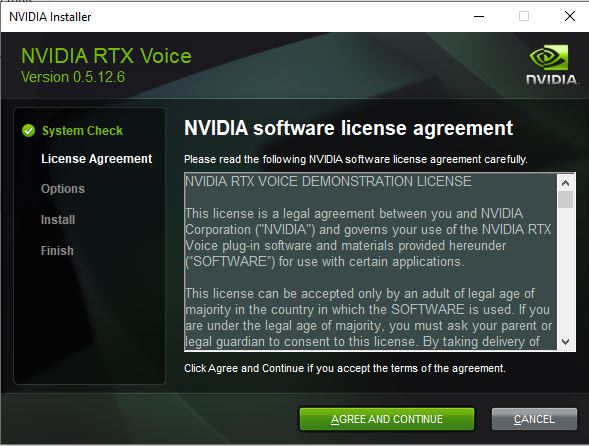

- #Rtx voice vs nvidia broadcast how to
- #Rtx voice vs nvidia broadcast install
- #Rtx voice vs nvidia broadcast full
I have a guide showing you how to do both here. Its performance is slightly better than Krisp, but it’s not worth ruining a recording or an important video conference call when the bugs show up.Īgain, for mild noise cancellation such as PC fans, I recommend using OBS’s built in RNNoise or Audacity’s Noise Reduction effect. Perhaps the NVIDIA Broadcast version is getting better stability patches, but the RTX Voice standalone option is way too buggy for me to recommend. Chris Fox put Nvidia RTX Voice and Krisp to the testNoise Removal can be found inside of Nvidias RTX Broadcast app. Overall, I recommend Krisp over RTX Voice.
#Rtx voice vs nvidia broadcast full
The second bug was RTX Voice crashing randomly and requiring a full system reboot to start it up again. You can find other people reporting this same issue on Reddit - it’s been going on for a long time now. I won’t include the actual audio to save your ears, but here’s the waveform from Audacity. In the middle of my tests, without changing any settings, the volume spiked to as high as it could possibly get and created an incredibly loud blaring screech.

I tried changing encoding settings, disabling my audio filters, and even updating OBS Studio itself, but there are some noticeable audio glitches in the video below.The first bug was audio distortion.

This is the version NVIDIA is focusing more resources on. 2) RTX voice, while amazing for what it does cancel, does not work particularly well to cancel other types of noise like music or youtube video playing in the. The version in NVIDIA Broadcast only works with RTX graphics cards. There's a version that comes with NVIDIA Broadcast and also the RTX Voice app itself.

There is also an issue I experienced while recording the follow-up video through OBS Studio. There are actually two versions of RTX Voice. Your input device should be NVidia Broadcast, or RTX voice if you are using a non-RTX GPU. Your output device should be assigned to whatever you normally use. When you open the program, you will have to go into your “sound settings” on Windows by hitting the Windows key and typing that in. Like the previous version of RTX Voice, NVidia Broadcast still has the issue of defaulting all of your sound input and output devices in Windows. Since creating the original tutorial, I was able to purchase a NVidia RTX 3080 FE, so I figured I would cover the current version of that program and the issues that you may run into. Broadcast specifically uses Tensor Cores on NVIDIA RTX GPUs to accelerate AI calculations so you can game, livestream and run AI networks at the same time.
#Rtx voice vs nvidia broadcast install
The current install process for RTX Voice / NVidia Broadcast only takes a few seconds. RTX Voice, while great, is limited to Nvidia GPUs and needs to be run manually each time I want to use it so it wasn't very convenient to me, so I decided to look into other alternatives and found RNNoise, or rather 'Real-time Noise Suppression Plugin' which is a plugin based on RNNoise. published 29 January 2021 NVIDIA Broadcast (Image credit: NVIDIA) What is NVIDIA Broadcast Best answer: NVIDIA Broadcast is an app for Windows 10 that uses AI enhancements for voice and. In the current version of the program, it is no longer necessary to modify configuration files to get the program installed on older graphics cards – likely due to the shortage of RTX cards in the current market. In a previous article and subsequent video, I explained the process to install RTX Voice on a non-RTX graphics card from NVidia.


 0 kommentar(er)
0 kommentar(er)
